The Great Controversy (Lesson 8) Light From the Sanctuary Part 1-6
WHY ARE MY PRAYERS NOT BEING ANSWERED?
Does it seem like your prayers are not being answered? What might be the reason?
“Welcome back to what promises to be an epic journey through the unseen. We are looking at a saga, not of this world.
This is the 8th part of a 13-part series unlike any other.
We’re diving into the cosmic war beyond what we cannot see, hear, or imagine.
It is a war between the forces of good and evil. It is a war for our souls. It is designed to strip us of our knowledge of God, his Word, and our relationship with him.
We’re digging deep into the heart of this cosmic battle, exploring the origins of sin, the nature of evil, the history, and what will lead to the ultimate showdown between Christ and Satan.
This series is about understanding the forces at play and our place within this universal struggle.
Every episode, every moment of this journey matters because, like it or not, this is a war that touches us all.
It is about a God who loves us so much that He is willing to give His life to maintain a relationship with us. Now, as our High Priest, He officiates for us in the Heavenly Sanctuary. What does that mean in relation to our prayers?
Your view of the universe and our place within it is about to change forever.
Before diving into this conflict, let’s take a moment to invite God’s presence.
If you have not viewed the previous videos, view them at SabbathSchoolDaily.com
Inviting God’s Presence
Heavenly Father, help us better understand our prayers in relation to Jesus’ work as our Great High Priest and what it means for us now and into eternity. In Jesus’ Name, Amen.
The Great Controversy
The War Between Good and Evil
(Lesson 8)
Light From the Sanctuary
Part 1 Introduction
Mr. Miller and his followers believed that the cleansing of the sanctuary, as described in Daniel 8:14, referred to the Earth being purified by fire in preparation for the saints’ eternal home. They anticipated this event was to coincide with Christ’s return, marking the end of the prophetic 2300 days or years.
This expectation set the stage for their bitter disappointment when Christ did not return as expected.
In the wake of this bitter disappointment, they returned to the Scriptures with prayer and renewed vigor rather than turning away from God.
After a period of suspense, waiting, prayerful study, and thoughtful contemplation, clarity emerged from their confusion. Light poured in upon their darkness, and doubt and uncertainty were swept away.
What they initially perceived in Daniel 8:14 as the Earth being purified was made plain.
14 And he said to me, “For two thousand three hundred days; then the sanctuary shall be cleansed.” (Daniel 8:14)
They realized that Daniel 8:14 pointed not to earthly events but to the closing work of our High Priest in heaven, the completion of the atonement, and the preparation of His people for His coming.
This insight is captured in Hebrews 8:1-2, which affirms Christ’s role as the High Priest in the true sanctuary in heaven established by God Himself, not made by human hands.
Hebrews 8:1-2
1 Now this is the main point of the things we are saying: We have such a High Priest, who is seated at the right hand of the throne of the Majesty in the heavens,
2 a Minister of the sanctuary and of the true tabernacle which the Lord erected, and not man. (Hebrews 8:1-2)
Thus, shortly after the bitter disappointment of October 22, 1844, some of the Millerites, through prayer, faith, and perseverance, came to understand that the 2300-day prophesy had nothing to do with Christ’s Second coming but His entrance into the heavenly sanctuary to begin the purification of our sin, as paralleled in the earthly cleansing of the sanctuary described in the Book of Leviticus.
This cleansing of the sanctuary in heaven was the fulfillment of the ceremonial cleansing of the earthly sanctuary.
To better understand this important truth, examine the parallel between Daniel 7 and 8.
This affirms that Jesus’ cleansing of the heavenly sanctuary, which is the pre-Advent judgment, the judgment that happens before His second return, correlates directly with His final act as our Judge, marking the culmination of His divine timeline.
In this lesson, we explore Christ’s ministry in heaven. As we reflect on Jesus’ ongoing work in the heavenly temple, let us draw inspiration from the Millerites, who journeyed from disappointment to enlightenment. Their story teaches us resilience in faith and the importance of seeking deeper understanding and persistence in prayer.
Notice what it says about faith in relation to the importance of understanding Christ’s work for us in the heavenly sanctuary in the book Lift Him Up:
The subject of the sanctuary and the investigative judgment should be clearly understood by the people of God. All need a knowledge for themselves of the position and work of their great High Priest. Otherwise it will be impossible for them to exercise the faith which is essential at this time or to occupy the position which God designs them to fill. Lift Him Up, p. 329.
To obtain a better understanding of Christ’s work in the sanctuary and how it affects our answered prayers:
Continue to Part 2: The Heavenly Sanctuary
The Great Controversy
The War Between Good and Evil
(Lesson 8)
Light From the Sanctuary
Part 2: The Heavenly Sanctuary
The Adventist pioneers anchored their hopes on the prophecy that Jesus would return in 1844. However, this year instead marked a profound moment of collective heartache known as the Great Disappointment. In seeking understanding, they turned again to Scripture in the months following October 22, 1844. Their prayers and diligent search helped them to understand that the Bible refers to two sanctuaries: the earthly one constructed by Moses and the original one in heaven. Moses patterned the earthly sanctuary or tabernacle after the original one he saw in heaven
The earthly sanctuary, as described in Exodus 25:8, 9, 40, served as a tangible model of the heavenly sanctuary or tabernacle.
8 And let them make Me a sanctuary, that I may dwell among them.
9 According to all that I show you, that is, the pattern of the tabernacle and the pattern of all its furnishings, just so you shall make it.
40 And see to it that you make them according to the pattern which was shown you on the mountain. (Exodus 25:8-9, 40)
Moses patterned it after the true Tabernacle described in Hebrews 8:1-6.
Hebrews 8:1-6
1 Now this is the main point of the things we are saying: We have such a High Priest, who is seated at the right hand of the throne of the Majesty in the heavens,
2 a Minister of the sanctuary and of the true tabernacle which the Lord erected, and not man.
3 For every high priest is appointed to offer both gifts and sacrifices. Therefore it is necessary that this One also have something to offer.
4 For if He were on earth, He would not be a priest, since there are priests who offer the gifts according to the law;
5 who serve the copy and shadow of the heavenly things, as Moses was divinely instructed when he was about to make the tabernacle. For He said, “See that you make all things according to the pattern shown you on the mountain.”
6 But now He has obtained a more excellent ministry, inasmuch as He is also Mediator of a better covenant, which was established on better promises. (Hebrews 8:1-
Therefore, from the diligent study of the scriptures, the early Millerites or Adventist believers realized that the term “sanctuary,” as used in the Bible, refers:
first, to the tabernacle built by Moses. It was a pattern or “type” of heavenly things.
second, to the “true tabernacle” is in heaven. The earthly sanctuary pointed to the one in heaven.
Thus, this earthly tabernacle was not merely a place of worship; it was a divine blueprint mirroring the heavenly sanctuary’s layout and purpose.
Each service performed by the priests, every ritual, was a lesson in salvation, preparing God’s people to understand Jesus’ sacrificial role as our Redeemer.
Jesus’ death completed His earthly mission, ending the need for the rituals and sacrifices of the earthly sanctuary.
His death ushered in a New Covenant, shifting the focus from the physical tabernacle or temple in Jerusalem to Jesus’ ministry in God’s heavenly temple. (Split)
As noted in “The Great Controversy,” the significance of the 2300-day prophecy from Daniel 8:14 becomes evident.
14 And he said to me, “For two thousand three hundred days; then the sanctuary shall be cleansed.” (Daniel 8:14) (Spit)
It points us towards the ongoing work in the heavenly sanctuary, not the earthly one.
“At the termination of the 2300 days, in 1844, there had been no sanctuary on earth for many centuries. Thus the prophecy, ‘Unto two thousand and three hundred days; then shall the sanctuary be cleansed,’ unquestionably points to the sanctuary in heaven.”—Ellen G. White, The Great Controversy, p. 417.
The sanctuary Moses constructed in the wilderness was a model or a pattern of the heavenly sanctuary. The services in the earthly sanctuary point to God’s divine plan of salvation.
The earthly sacrifices foretold Jesus’ ultimate sacrifice on Calvary. Every sacrifice offered represented Jesus’ sacrifice on the cross of Calvary, as John the Baptist declared in John1:29.
29 The next day John saw Jesus coming toward him, and said, “Behold! The Lamb of God who takes away the sin of the world! (John 1:29)
Jesus is the Lamb of God!
Hebrews 7:25 explains: “Therefore He is also able to save to the uttermost those who come to God through Him, since He always lives to make intercession for them” (NKJV).
Jesus is our High Priest. His ongoing priestly work mediating for humanity in the heavenly temple continues today.
Jesus was not only sacrificed for our sins. He now actively intercedes for us. He is ensuring our freedom from sin’s penalties and power, as expressed in Romans 8:1–4 and 2 Corinthians 5:21.
1 There is therefore now no condemnation to those who are in Christ Jesus, who do not walk according to the flesh, but according to the Spirit. (Split)
2 For the law of the Spirit of life in Christ Jesus has made me free from the law of sin and death.
3 For what the law could not do in that it was weak through the flesh, God did by sending His own Son in the likeness of sinful flesh, on account of sin: He condemned sin in the flesh,
4 that the righteous requirement of the law might be fulfilled in us who do not walk according to the flesh but according to the Spirit. (Romans 8:1-4)
2 Corinthians 5:21
21 For He made Him who knew no sin to be sin for us, that we might become the righteousness of God in Him. (2 Corinthians 5:21)
We are, therefore, no longer under bondage or enslaved to our sinful natures. In Christ we are free. We are free from sin’s condemnation and we are from the control of sin. As we hold on to Christ by faith, we have the assurance of salvation.
Jesus, our Lamb and High Priest, bridges heaven and earth and provides us with a pathway to forgiveness and freedom from sin.
Therefore, day by day, morning and evening, let us, with humble hearts, offer up our prayers, and in return, we receive answers of grace, peace, and joy. (The Seventh-day Adventist Bible Commentary, vol. 6, p. 1078 paraphrased)
In regard to the sanctuary service, the day of atonement was especially significant. Why was it so important? Read: Leviticus 16:21, 29–34; Leviticus 23:26–32; and Hebrews 9:23–28. Then view the next segment of this video, Part 3: In the Holy of Holies
The Great Controversy
The War Between Good and Evil
(Lesson 8)
Light From the Sanctuary
Part 3: In the Holy of Holies
The Day of Atonement, described vividly in Leviticus 16 and 23, was not merely an annual event; every day of the year, the priest ministered in the sanctuary. But on the Day of Atonement, called Yom Kippur, the focus all of Israel was turned toward the sanctuary.
In Leviticus 16 and 23, God gave explicit instructions for the Day of Atonement, it was the day on which God removed all sin from the sanctuary.
It was the only day on which the High Priest entered the Most Holy Place within the Tabernacle of Meeting to stand before God on behalf of the people. It was a most sacred day, a day in which everyone fasted, and all regular activity ceased.
While the high priest entered God’s presence for all the people in the Most Holy Place, the people examined their hearts. They sought God in humility and heartfelt confession for their sins.
The congregation’s humility was critical because, on the Day of Atonement, Leviticus 23:27 and 29 warns that anyone who fails to humble themselves and present an offering before the Lord was to be “cut off” from God’s people.
27 “On exactly the tenth day of this seventh month is the day of atonement; it shall be a holy convocation for you, and you shall humble your souls and present an offering by fire to the Lord.
29 If there is any person who will not humble himself on this same day, he shall be cut off from his people. (Leviticus 23:27, 29)
The term “cut off” meant being separated from God’s covenant people.
The ceremonies performed by the High Priest on the Day of Atonement were symbolic. On this sacred day, the high priest took the blood of the Lord’s goat into the sanctuary and, after sprinkling it on the mercy seat, applied the blood to the horns of the golden altar and of the brazen altar, completely cleansing the entire sanctuary. Ark of the Covenant, where God’s presence would appear in a cloud over the mercy seat.
This act of sprinkling blood symbolized the atonement for the Holy Place itself and for the people, cleansing them from their sins.
As cited in Leviticus 16:20-22, after the high priest has made “an end of reconciling” for the sins of the people, the high priest then laid his hands on the live goat, confessing all the sins and transgressions of Israel. This live goat, also called the scapegoat, was led into the wilderness to be separated from the camp forever; the act vividly illustrated the complete removal of the sins of the people.
20 “And when he has made an end of atoning for the Holy Place, the tabernacle of meeting, and the altar, he shall bring the live goat. 21 Aaron shall lay both his hands on the head of the live goat, confess over it all the iniquities of the children of Israel, and all their transgressions, concerning all their sins, putting them on the head of the goat, and shall send it away into the wilderness by the hand of a suitable man.
22 The goat shall bear on itself all their iniquities to an uninhabited land; and he shall release the goat in the wilderness. (Leviticus 16:20-22)
Drawing parallels from Hebrews 9:23–28, we see that these earthly ceremonies were a foreshadowing of the heavenly work done by Christ. Just as the High Priest entered the Most Holy Place with blood for atonement, Christ entered the true sanctuary in heaven, once for all, offering His own blood to secure eternal redemption for us.
The blood was transferred into the sanctuary during the daily services, showing the recording of sin (Jer. 17:1) and God’s taking responsibility for its ultimate disposition.
Now, on the Day of Atonement, it was transferred out of the sanctuary and placed on the head of the scapegoat Azazel, representing Satan and revealing his ultimate responsibility for the sin problem.
Thus, the Lesson study points out that this goat was led far into the wilderness so that, at the close of the Day of Atonement, God had a clean sanctuary and a clean people. In the heavenly sanctuary, Christ ministers for us first in the Holy Place, and now, in the Most Holy Place since 1844, at the end of the 2,300 days.
As the early Adventists understood it, Jesus has been performing the antitypical Day of Atonement in the heavenly sanctuary since 1844, making final atonement for our sins.
Reflecting on the Day of Atonement is a reminder of the seriousness of sin and the immense cost of our redemption. The ancient observance of the Day of Atonement points us to Jesus, our High Priest, who was not only sacrificed for us but is actively interceding on our behalf.
This is an assurance that we will get through this great judgment, not because of anything we have done but because of what Jesus has done for us. Jesus is our Substitute.
As the book The Desire of Ages beautifully explains, we are “justified by His righteousness, in which we had no share.”
As a result of this righteousness credited (imputed) to us, we afflict our souls, turning away from sin. Consequently, we do not find comfort in doing evil. Nor do we find pleasure in excusing or clinging to cherished sins. Instead, we continue to grow in grace, striving to live lives free from sin.
This should lead us to more faith, sincere prayer, and a deeper commitment as we live each day in grateful response to His unending grace and mercy.
A prominent theme in the Bible is the judgment. What is the Judgement? Read Daniel Daniel 7:9, 10, and Revelation 14:6, 7.
Continue to the next Segment of this video, Part 4: The Judgement Has Come
The Great Controversy
(Lesson 8)
Light From the Sanctuary
Part 4: Judgement Has Come
The idea of judgment offers a solemn warning, but because God is a just Judge of all judgment, it also offers a hopeful promise.
Daniel 7:9-10 and Revelation 14:6-7 present a compelling portrayal of God’s judgment.
Daniel’s vision depicts thrones being set in place and the Ancient of Days taking His seat.
His clothing is as white as snow, and His throne is fiery with wheels of burning fire, a river of fire flowing before Him.
Thousands upon thousands attend Him and millions stand before the throne where the books are opened.
This scene depicts God as the majestic and ultimate judge.
Similarly, John, in Revelation 14, introduces an angel flying in the midst of heaven, proclaiming the eternal gospel to every nation and calling all to fear God and give Him glory “because the hour of His judgment has come.”
This angelic announcement reinforces the reality of God’s imminent judgment, mirroring the judicial imagery in Daniel.
Both passages emphasize the fairness of God’s judgment.
They establish that God is fully aware of all our actions, whether visible or hidden, as stated in Ecclesiastes 12:14
“For God will bring every work into judgment, including every secret thing, whether good or evil” (Ecclesiastes 12:14, NKJV).
This is reinforced by Jesus in Matthew 12:36 when he says
“ ‘every idle word men may speak, they will give account of it in the day of judgment’ ” (Matthew 12:36, NKJV) (Split)
and Paul in 1 Corinthians 4:5 makes the same point saying
God will “bring to light the hidden things of darkness, and will make manifest the counsels of the hearts” (1 Corinthians 4:5)
The imagery of the books being opened signifies that no deed, word, or intention will escape God’s thorough examination.
Thus, the angelic messenger in Revelation 14:7 said to John, “The hour of His [God’s] judgment has come” (Revelation 14:7, NKJV).
In the context of Christ’s second coming, as outlined in Revelation 22:10–12, the completion of God’s judgment is upon us.
10 And he said to me, “Do not seal up the words of the prophecy of this book, for the time is near.
11 Let the one who does wrong, still do wrong; and the one who is filthy, still be filthy; and let the one who is righteous, still practice righteousness; and the one who is holy, still keep himself holy.”
12 “Behold, I am coming quickly, and My reward is with Me, to render to every man according to what he has done. (Revelation 22:10-12)
So, Jesus will return not only to reward but also to finalize the destinies of humanity.
At Jesus’s second coming, He gives out His final rewards.
This tells us that a judgment will occur before His return.
This judgment determines who will receive what reward at His second coming.
This event is crucial, for there will be no second chances.
At that point, we all, every human being, will have had sufficient information to make our final, irrevocable decision for or against Christ.
Therefore, the judgment determines who receives eternal salvation and who faces permanent separation from God’s presence.
Read Matthew 25:1-13. This is Jesus’ parable of the ten virgins. It illustrates the urgency and finality of this judgment.
The prepared virgins symbolize those ready and waiting for Christ.
They are welcomed into the wedding feast, while the unprepared are shut out, highlighting the critical importance of readiness at Christ’s return.
Notice what it says in the Great Controversy:
“When the work of investigation shall be ended, when the cases of those who in all ages have professed to be followers of Christ have been examined and decided, then, and not till then, probation will close, and the door of mercy will be shut. Thus in the one short sentence, ‘They that were ready went in with Him to the marriage: and the door was shut,’ we are carried down through the Saviour’s final ministration, to the time when the great work for man’s salvation shall be completed.” —Ellen G. White, The Great Controversy, p. 428.
Daniel and Revelation’s depiction of God’s judgment invites us to reflect deeply on our own spiritual readiness. While the notion of divine judgment might seem daunting, it is ultimately a demonstration of God’s justice and mercy.
Jesus, our mediator, offers us forgiveness and the power to overcome sin, ensuring that we are not alone in our spiritual battles.
It is up to us to approach God’s judgment with a spirit of readiness and reverence, trusting in Jesus’ redemptive work on our behalf.
This is why we must clearly understand Jesus’ work in the Most Holy Place, for it brings faith, surety, and hope. What can we learn about Jesus from the Most Holy Place?
View the next segment of this video: Part 5: The Good News of the Most Holy Place
The Great Controversy
(Lesson 8)
Light From the Sanctuary
Part 5: The Good News in the Most Holy Place
The letter to the Hebrews offers an invitation and a promise that we can personally approach God with confidence and assurance that he will receive us.
It offers a powerful message of hope and assurance. The Apostle Paul in Hebrews 4:14–16 and Hebrews 10:19–22 encourages us to “hold on fast the things we believe” with complete trust and faith.
He advises us to “hold fast” and come boldly to God’s throne of grace.
Could our unanswered prayers be because we are not holding on?
Could we be “letting go the arm of the Lord too soon.” (E.G. White, Early Writings, p. 72)
Paul admonished us to focus our faith on Jesus, our great High Priest. With Jesus, we have all we need.
Thus, by faith, we may enter the heavenly sanctuary in a “new and living way” that Jesus has made possible for us.
Paul paints a vivid picture of the sanctuary, with blood on the brazen altar. (Split)
In the Holy Place, an image of blood on the horns of the altar of incense is portrayed, and a picture of blood sprinkled on the curtain is depicted.
All these images serve as compelling symbols of Jesus’s path to save us.
Each image of an article of furnishing in the sanctuary is portrayed as sprinkled with sacrificial blood, underscoring the depth of Jesus’ sacrifice.
This is a reminder that our approach to God can be only by the blood of Jesus.
The picture Paul paints extends to the vision John shares in Revelation 11:19, in which he declares:
19 Then the temple of God was opened in heaven, and the ark of His covenant was seen in His temple. And there were lightnings, noises, thunderings, an earthquake, and great hail. (Revelation 11:19)
John sees the Ark of the Covenant in the throne room of the universe, in the Most Holy Place, with its dazzling brightness and the blazing glory of God’s presence.
The Most Holy Place is where God’s justice and mercy are revealed. It is the place of God’s throne.
At the very base of God’s throne, we find the law of God in the ark of the covenant.
The law of God contained in the ark of the covenant symbolizes the unbreakable bond between divine justice and mercy.
It signifies that no earthly power or authority can change or alter God’s law, which is held in treasury in the ark of the covenant in heaven.
Hebrews 8:10 echoes this saying: “ ‘For this is the covenant that I will make with the house of Israel after those days, says the Lord: I will put My laws in their mind and write them on their hearts; and I will be their God, and they shall be My people’ ” (Hebrews 8:10)
Paul, in Hebrews 4:14, tells us how we may approach God’s throne in time of need. we are invited to “come boldly to the throne of grace, that we may obtain mercy and find grace to help us in our time of need.” (Hebrews 4:14)
Thus, we may go to God not as distant, fearful outsiders but as His dear children who are fully known of Him.
This assurance is offered to us, not just once, but in our time of need.
Therefore, by faith, we can enter the sanctuary in heaven into the very throne room of God.
There, we can find pardon for our past sins and obtain the power to live an obedient life through Christ Jesus, who died for us and writes God’s law in our hearts.
As expressed in Hebrews 7:25, Jesus saves us to the “uttermost” (Hebrews 7:25).
He saves us totally and completely—from the penalty of sin and death and from its power over us.
Therefore, in Jesus, we find a High Priest and an ever-present Helper who stands before the Father on our behalf.
Thus, In Christ’s name, our petitions ascend to the Father. He intercedes on our behalf, and the Father lays open all the treasures of His grace for our consumption to enjoy and communicate to others. Christ says, ask in My name; I do not say that I will pray for the Father for you, for the Father Himself loveth you because you have loved Me. (In Heavenly Places, p. 77 adapted)
We are to make use of Jesus’ name. This will give your prayers efficiency, and the Father will give you the riches of His grace.
Why is our faith in Christ essential for our answered prayers and eternal salvation?
Continue to the next segment of this video, Part 6: Jesus, Our Advocate in the Judgement
The Great Controversy
(Lesson 8)
Light From the Sanctuary
Part 6: Jesus, Our Advocate in the Judgement
Understanding the distinct functions of the priest in the earthly sanctuary and Jesus Christ, our High Priest, in the heavenly sanctuary illuminates the depth of God’s salvation plan and His personal invitation to all of us.
Hebrews 10:9–14 offers a striking contrast between the work of the earthly priests and Jesus’ eternal priesthood in the heavenly sanctuary.
Earthly priests repeatedly offered sacrifices. These sacrifices could never fully remove sins.
These repeated ceremonies underscored the temporary and incomplete nature of their ability to cleanse from sin.
Each year, they served as a reminder of sins rather than eradicating them.
In contrast, Jesus’ sacrifice on the cross was a single, perfect offering that achieved what the countless sacrifices could not.
Christ died on the Cross once and for all, serving as a perfect sacrifice for sin.
Jesus has entered the Most Holy Place.
According to 1 John 2:1, He now stands as our Advocate with the Father.
1 My little children, these things I write to you, so that you may not sin. And if anyone sins, we have an Advocate with the Father, Jesus Christ the righteous. (I John 2:1)
Thus, Jesus’ work as our High Priest differs basically in its finality and sufficiency.
As understood by the early Adventists, Jesus, In 1844, entered the Most Holy Place.
He now stands before the Father as our Advocate.
This advocacy is vital because, as Hebrews 9:28 points out,
“Christ was offered once for all time as a sacrifice to take away the sins of many people. He will come again, not to deal with our sins, but to bring salvation to all who are eagerly waiting for him” (Hebrews. 9:28, NLT)
Jesus’ return will not be to deal with sin but to bring salvation to those eagerly awaiting Him.
Through His sacrifice and mediation, sin has been dealt with, so when he comes again, He is coming for those who “love his appearing,” as expressed in 2 Timothy 4:8.
8 Finally, there is laid up for me the crown of righteousness, which the Lord, the righteous Judge, will give to me on that Day, and not to me only but also to all who have loved His appearing. ( 2 Timothy 4:8)
As Hebrews 6:19–20 describes, Jesus, our forerunner, has entered behind the veil into the Most Holy Place on our behalf, anchoring our souls with hope.
19 This hope we have as an anchor of the soul, both sure and steadfast, and which enters the Presence behind the veil,
20 where the forerunner has entered for us, even Jesus, having become High Priest forever according to the order of Melchizedek. (Hebrews 6:19-20)
The Great Controversy points out how critical Christ’s intercession in the sanctuary, on our behalf is:
“The intercession of Christ on man’s behalf in the sanctuary above is as essential to the plan of salvation as was His death upon the cross. By His death He began that work which after His resurrection He ascended to complete in heaven. We must by faith enter within the veil, ‘whither the forerunner is for us entered.’ Hebrews 6:20. There the light from the cross of Calvary is reflected. There we may gain a clearer insight into the mysteries of redemption.
The salvation for man is accomplished at an infinite expense to heaven; the sacrifice made is equal to the broadest demands of the broken law of God. Jesus has opened the way to the Father’s throne, and through His mediation the sincere desire of all who come to Him in faith may be presented before God.”—Ellen G. White, The Great Controversy, p. 489.
Thus, because of sin, the plan of salvation was necessary to resolve the great controversy, the battle between good and evil, Christ and Satan, and rescue this world from the hands of Satan.
Jesus’s life reveals God’s love to a lost world and an on-looking universe.
His death shows how terrible sin is and provides salvation for all humanity.
His meditation in the heavenly sanctuary makes reconciliation between God and humanity possible for everyone who reaches out in faith to receive them.
And, for those reaching out in faith to receive reconciliation, Jesus stands as our advocate.
Therefore, as we follow Jesus, accepting him as our Lord and Savior, we will better understand the magnitude of His sacrifice and experience the transformative power of His priestly ministry.
As our experiences with him grow and our faith increases, we will have more fervent hope and a vibrant prayer life that results in answered prayers because we, in faith, pray in Jesus’ Name.
————————————————
Thank you for watching this video to be notified when my next video comes out, Subscribe to my YouTube Channel
You also may obtain the free study guide at Sabbath.School or ssnet.org
If you enjoyed this video and want to make it available for your friends and family to watch, click Like…..then…..Share.
Thank you for Liking, Sharing, and Subscribing.
Hebron Seventh-day Adventist Church
7902 Wheatly Street
Houston, TX 77088
Watch Past and Present Lessons at SabbathSchoolDaily.com
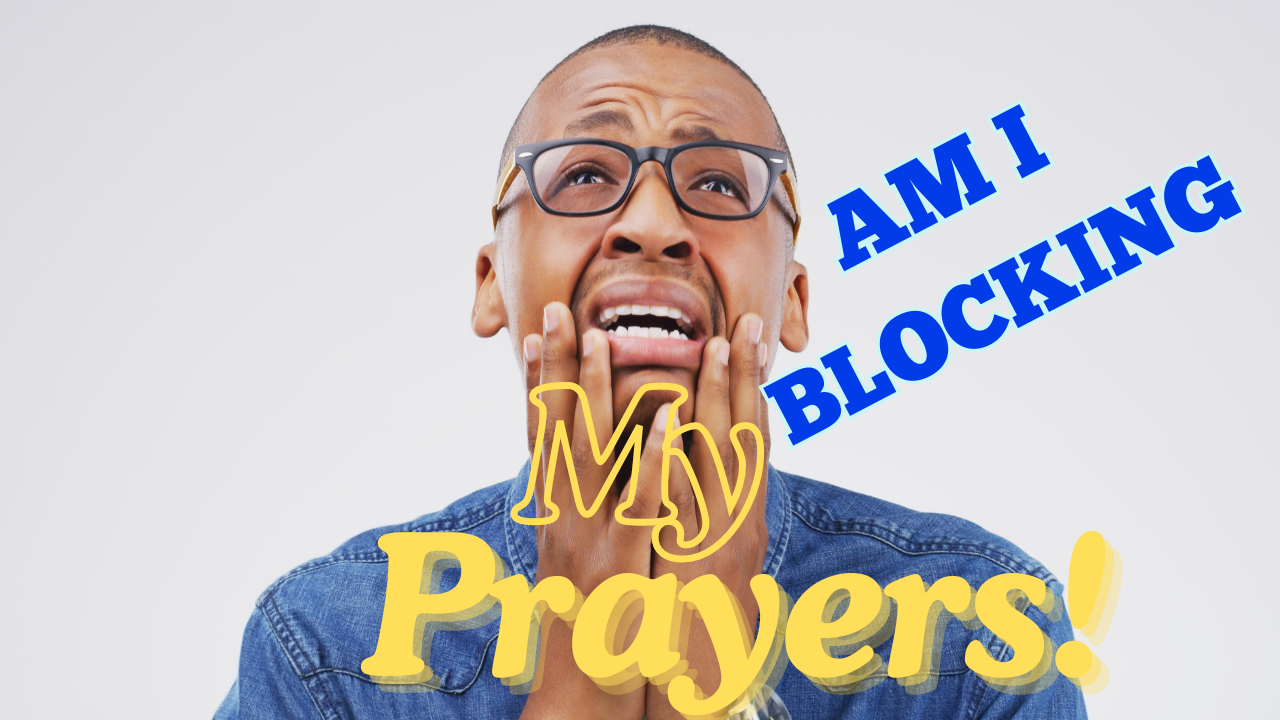
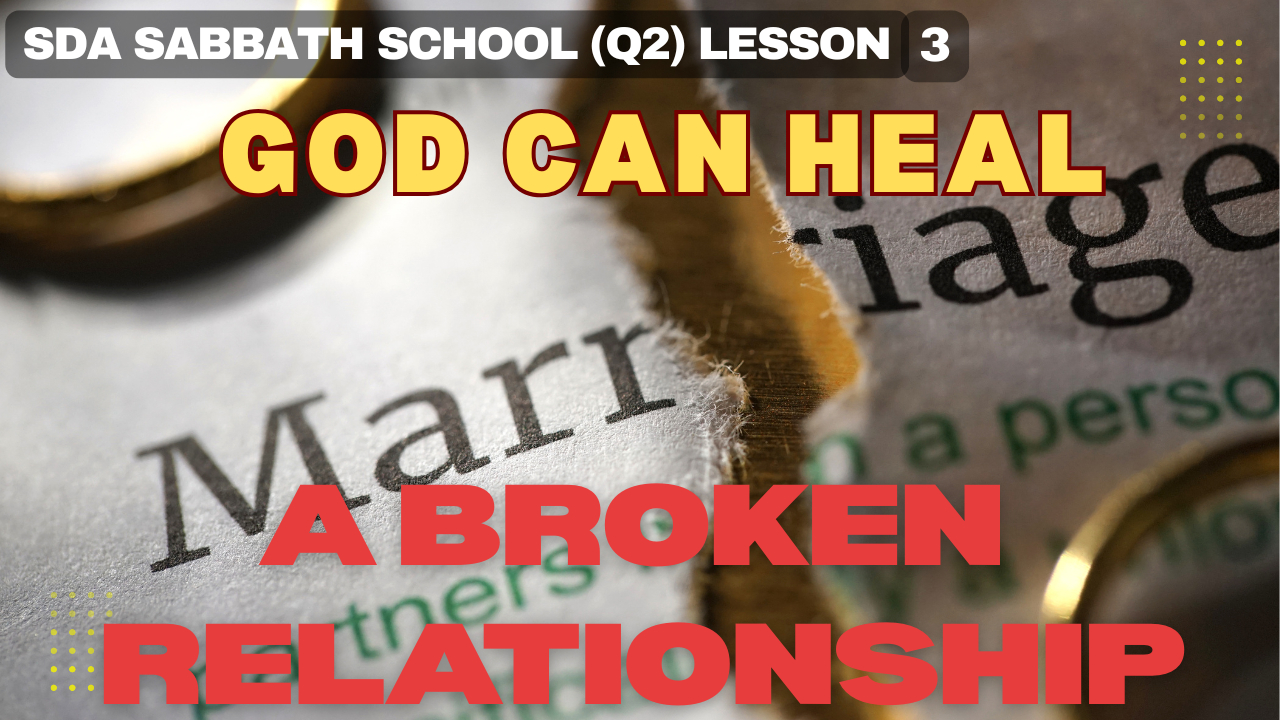
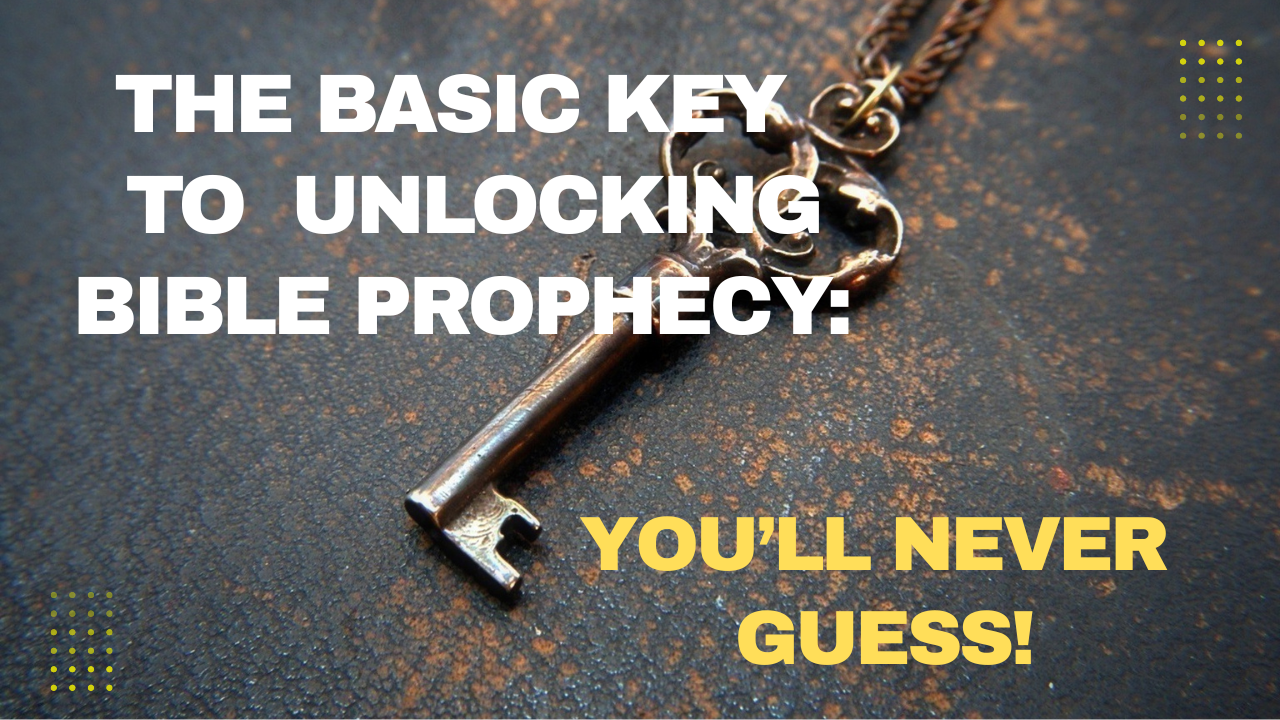
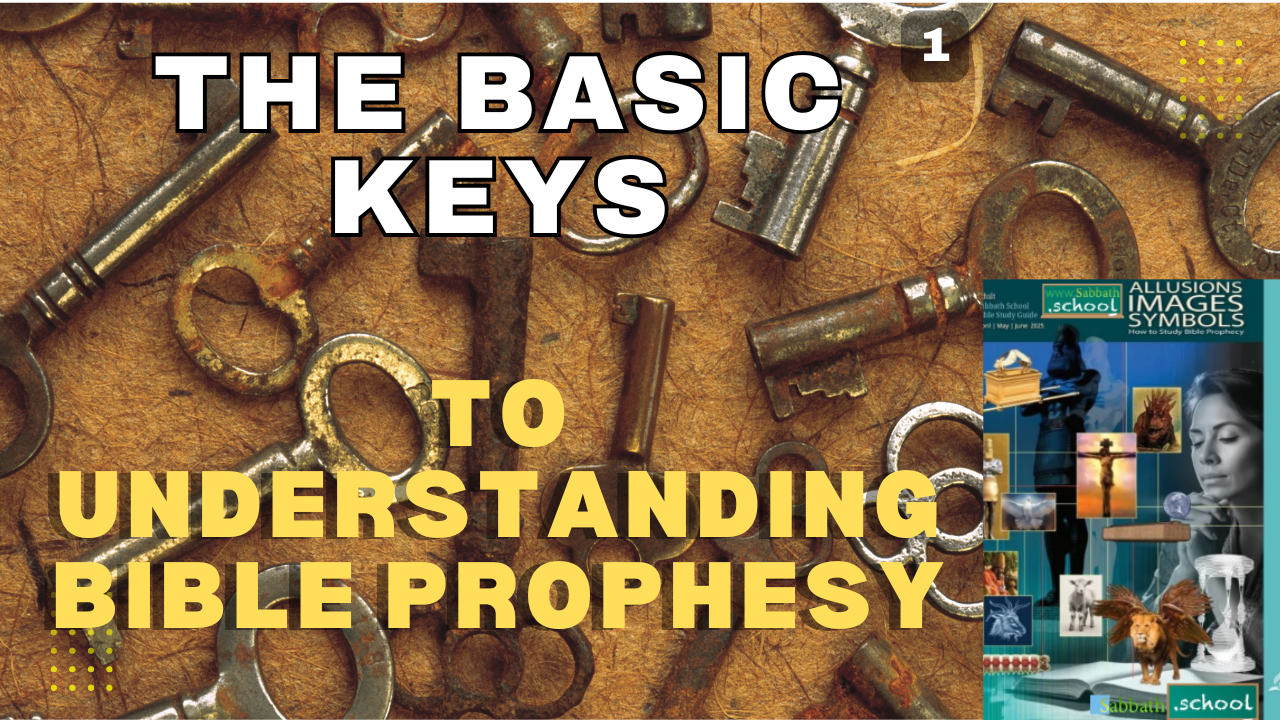

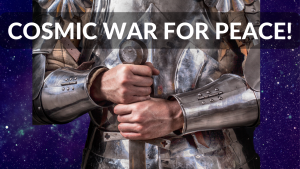

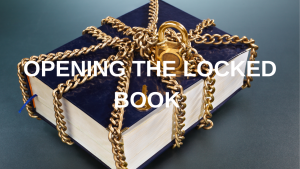






Post Comment